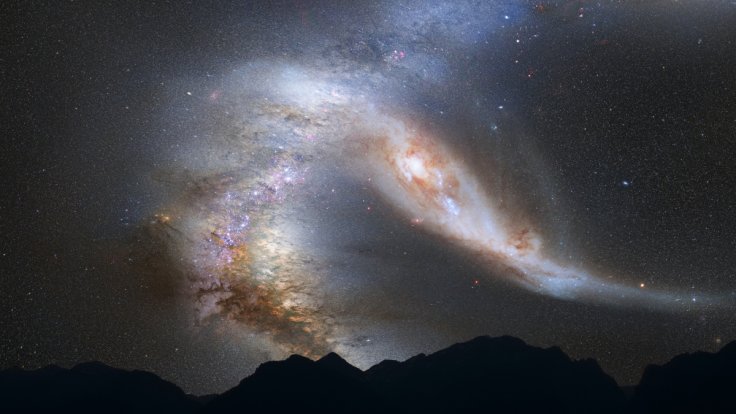
Our Milky Way and the Andromeda galaxy, two of the biggest galaxies in our part of the Universe will collide each other in about four billion years. According to experts, this galactic clash will be so huge, and only one galaxy will emerge victorious, while the other will be absorbed. Both the Andromeda galaxy and Milky Way contain billions of stars, and it is practically impossible to determine which one is more massive.
A new study reveals that the Andromeda galaxy which is at a distance of only 2 million light years has an equal footing when compared to Milky Way. Both the Andromeda and Milky Way galaxies have a mass which is about 800 billion times that of our sun. The similar mass of these two galaxies indicates that the upcoming collision will result in a draw.
However, finding the exact mass of these two galaxies are quite crucial, as it allows us to know more about the ultimate fate which we will face in the future. The major problem with estimating the exact mass of these galaxies is nothing but their vast size. The Andromeda galaxy is about 220,000 light years in diameter, while the Milky Way is about 1,00,000 light-years across.
Due to lack of data and complex calculations, uncertain answers were yielded while analyzing the mass of these galaxies. At times, scientists discovered that our Milky Way is more massive, while at some other times, Andromeda fetched the upper edge.
"The Andromeda galaxy is a dynamical system, and an accurate measurement of its total mass is central to our understanding of its assembly history, the life-cycles of its satellite galaxies, and its role in shaping the Local Group environment," said Prajwal R. Kafle, lead author of the paper and research associate at the University of Western Australia.
"Now we know that the Milky Way and Andromeda are of similar masses... Previously we were unsure who would be the major player in this battle, and who would dominate the gravitational battle ahead," the authors said.
Humans on Earth in the Milky Way should wait for another four billion years to know the winner of this ultimate gravitational battle.









